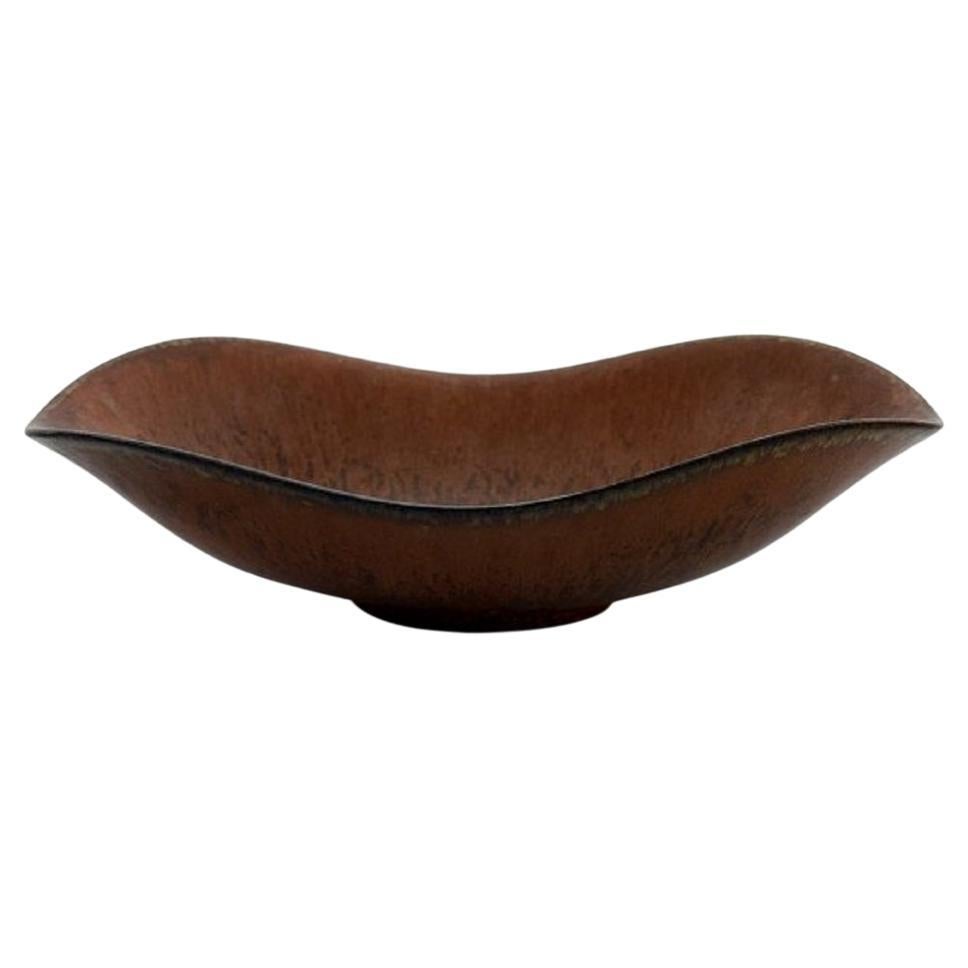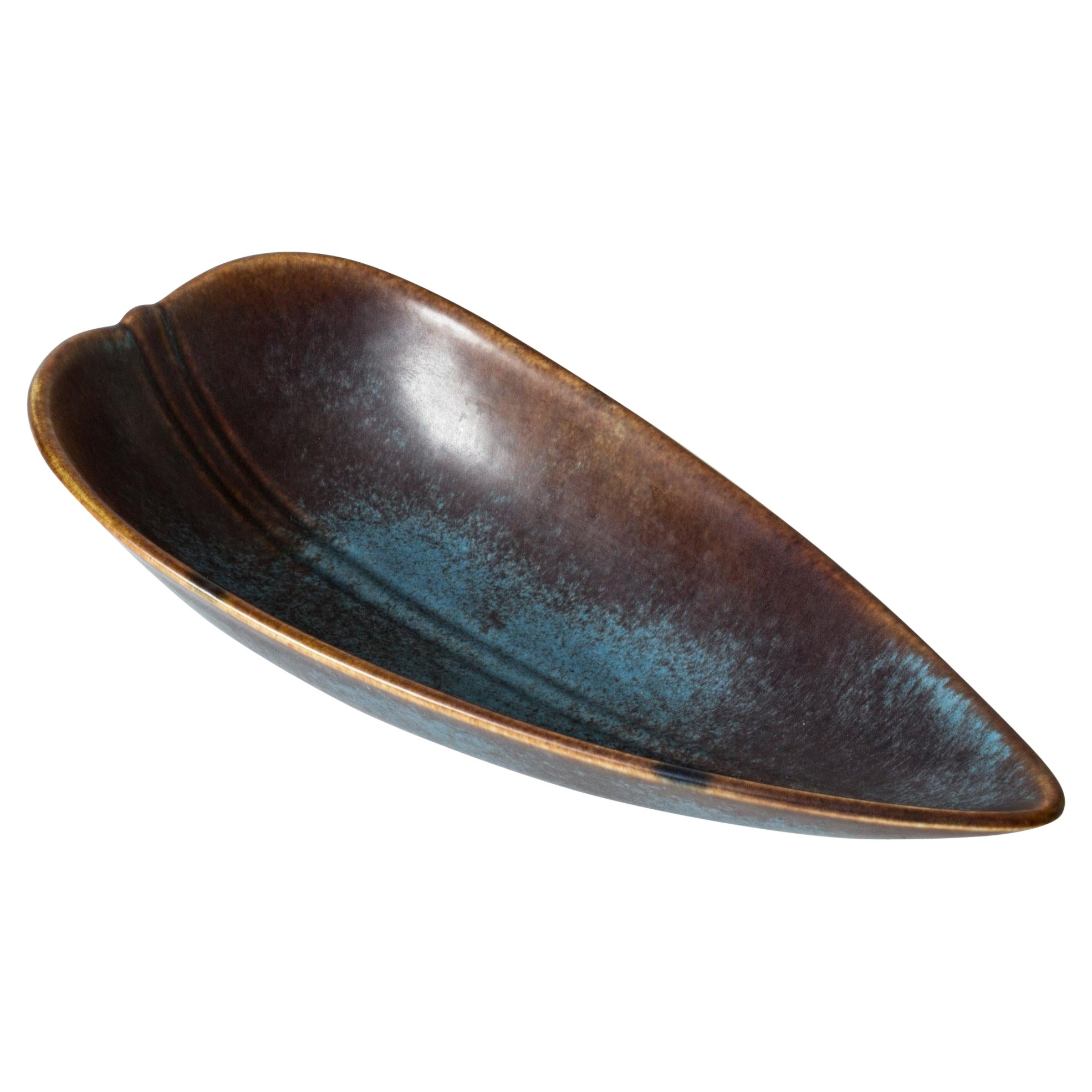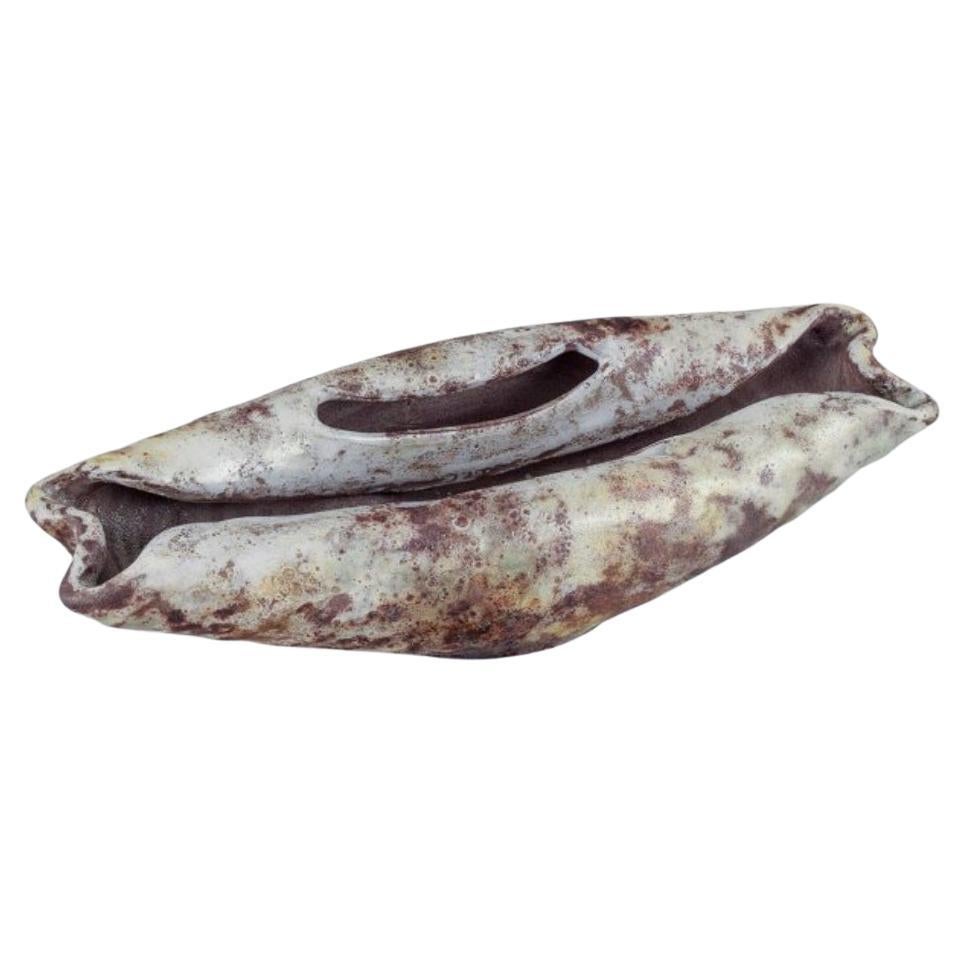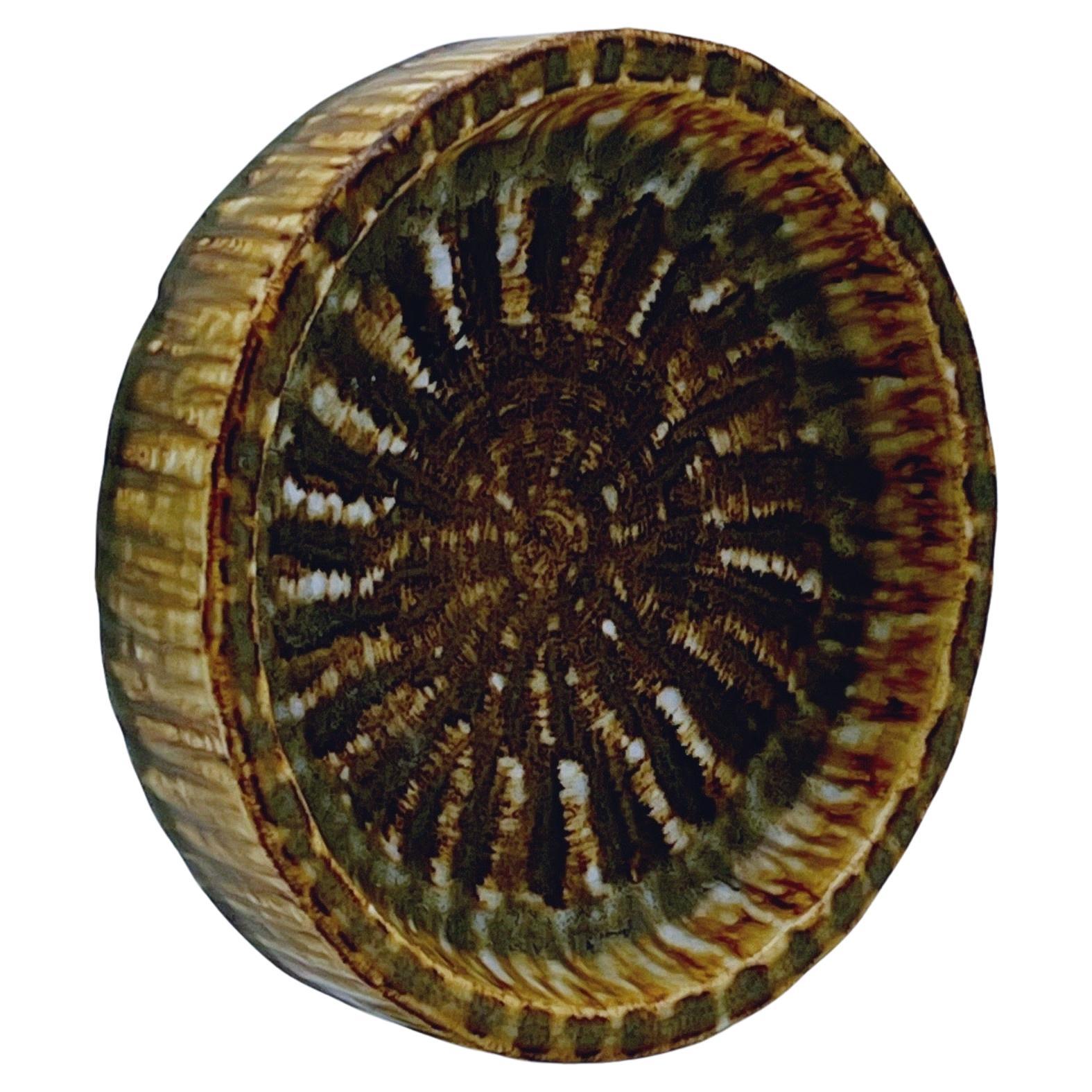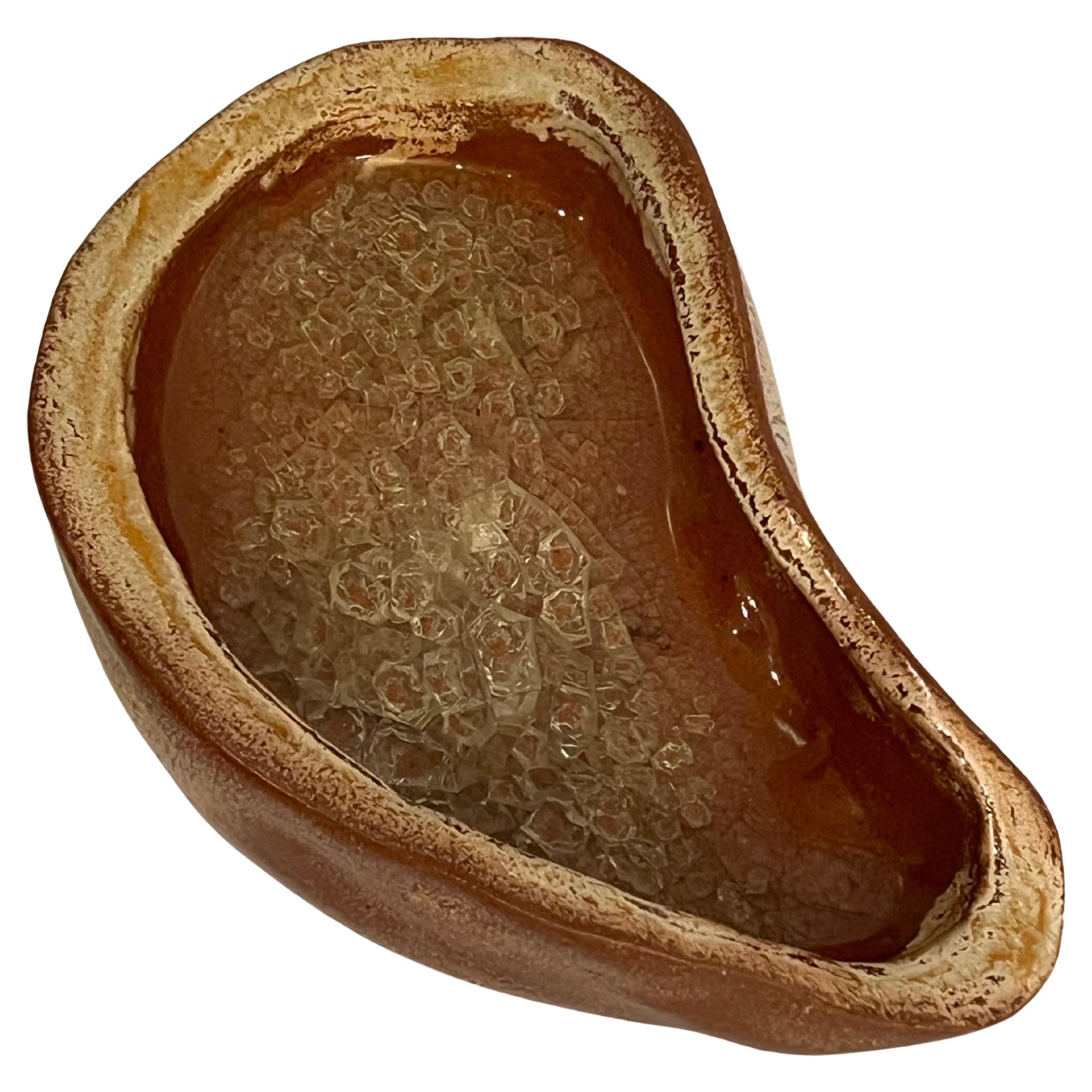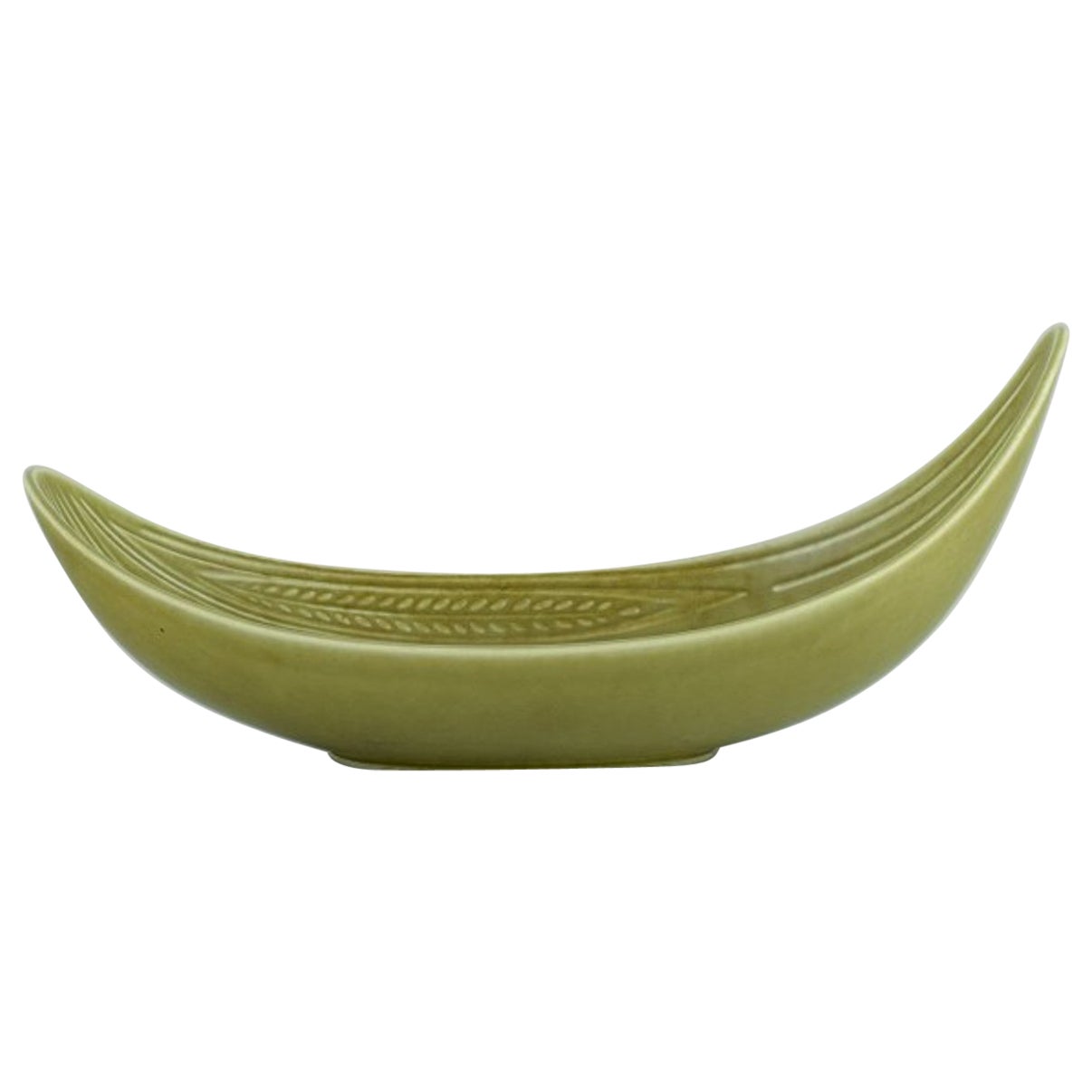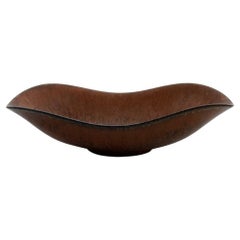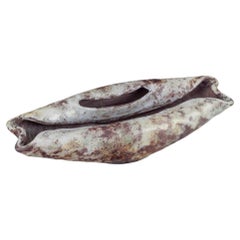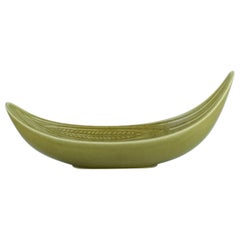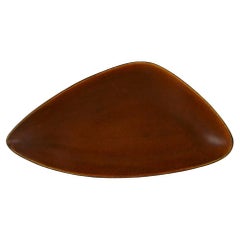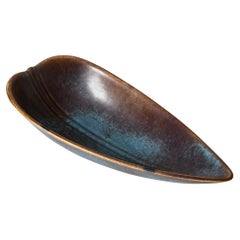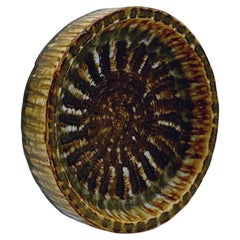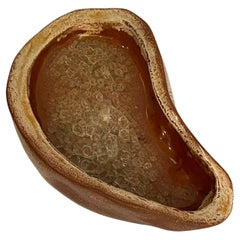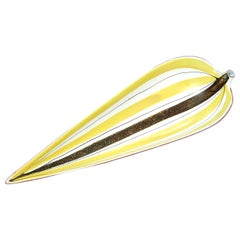Items Similar to Gunnar Nylund for Rörstrand. Boomerang-shaped ceramic bowl. Eggshell glaze.
Want more images or videos?
Request additional images or videos from the seller
1 of 9
Gunnar Nylund for Rörstrand. Boomerang-shaped ceramic bowl. Eggshell glaze.
$360
£271.84
€313.26
CA$508.11
A$560.18
CHF 293.07
MX$6,872.41
NOK 3,689.17
SEK 3,449.95
DKK 2,339.47
About the Item
Gunnar Nylund for Rörstrand. Boomerang-shaped ceramic bowl.
Eggshell glaze in light green and sand-colored tones.
Mid-20th century.
Marked.
In perfect condition.
Second factory quality.
Dimensions: W 21.0 cm x H 2.5 cm.
- Dimensions:Height: 0.79 in (2 cm)Width: 8.27 in (21 cm)Depth: 22.05 in (56 cm)
- Style:Scandinavian Modern (In the Style Of)
- Materials and Techniques:Ceramic,Glazed
- Place of Origin:
- Period:
- Date of Manufacture:Mid-20th C.
- Condition:
- Seller Location:København, DK
- Reference Number:1stDibs: LU1041244122532
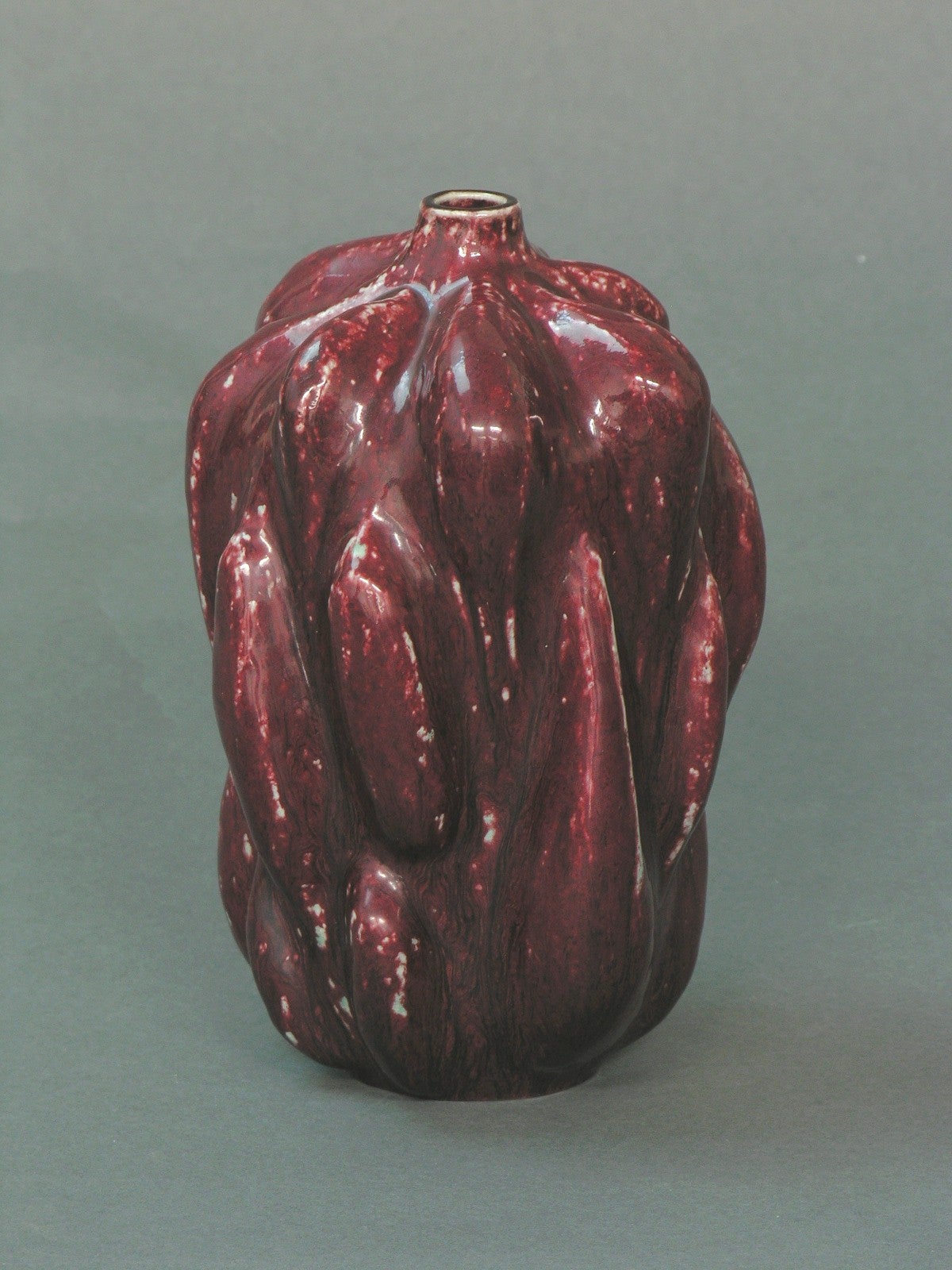
About the Seller
4.8
Gold Seller
Premium sellers maintaining a 4.3+ rating and 24-hour response times
Established in 1999
1stDibs seller since 2014
3,100 sales on 1stDibs
Typical response time: 7 hours
- ShippingRetrieving quote...Shipping from: Copenhagen , Denmark
- Return Policy
Authenticity Guarantee
In the unlikely event there’s an issue with an item’s authenticity, contact us within 1 year for a full refund. DetailsMoney-Back Guarantee
If your item is not as described, is damaged in transit, or does not arrive, contact us within 7 days for a full refund. Details24-Hour Cancellation
You have a 24-hour grace period in which to reconsider your purchase, with no questions asked.Vetted Professional Sellers
Our world-class sellers must adhere to strict standards for service and quality, maintaining the integrity of our listings.Price-Match Guarantee
If you find that a seller listed the same item for a lower price elsewhere, we’ll match it.Trusted Global Delivery
Our best-in-class carrier network provides specialized shipping options worldwide, including custom delivery.More From This Seller
View AllGunnar Nylund for Rörstrand, Bowl in Glazed Ceramics, Mid-20th C
Located in København, Copenhagen
Gunnar Nylund for Rörstrand. Bowl in glazed ceramics.
Beautiful glaze in brown shades. Mid-20th century
Measures: 17 x 11 cm.
Height: 4.5 cm.
Stamped.
In excellent condition.
Category
Mid-20th Century Swedish Scandinavian Modern Decorative Bowls
Materials
Ceramic
Alexandre Kostanda for Vallauris, France. Ceramic bowl with earth-toned glaze.
Located in København, Copenhagen
Alexandre Kostanda (1921-2007) for Vallauris, France.
Unique ceramic bowl with earth-toned glaze.
From the 1960s/70s.
Stamped.
In perfect condition.
Dimensions: L 30.0 cm x D 10 cm ...
Category
Vintage 1960s French Organic Modern Decorative Bowls
Materials
Ceramic
Gunnar Nylund '1904–1997' for Rörstrand. Rialto Bowl in Ceramic, 1960s
Located in København, Copenhagen
Gunnar Nylund (1904–1997) for Rörstrand.
Rialto bowl in ceramic, oblong organic shape with light green glaze.
1960s.
In perfect condition.
Marked.
Dimensions: L 34.0 x D 13.5 cm.
Category
Vintage 1960s Swedish Scandinavian Modern Decorative Bowls
Materials
Ceramic
Gunnar Nylund for Nymølle, Dish / Bowl in Glazed Ceramics
Located in København, Copenhagen
Gunnar Nylund for Nymølle. Dish / bowl in glazed ceramics.
Beautiful glaze in light brown shades.
1960s.
Measures: 37 x 6 cm.
In excellent condition.
Signed.
Category
Vintage 1960s Danish Decorative Dishes and Vide-Poche
Materials
Ceramic
LÖVA, Gustavsberg, Gabi Citron-Tengborg, Bowl in Glazed Ceramics, 1960s
Located in København, Copenhagen
LÖVA - Gustavsberg - Gabi Citron-Tengborg. Bowl in glazed ceramics. 1960s.
Measures: 20.5 x 9 cm.
Height: 4.5 cm.
In excellent condition.
Stamped.
Category
Vintage 1960s Swedish Scandinavian Modern Decorative Bowls
Materials
Ceramic
Gunnar Nylund for Rörstrand / Rørstrand. Bowl in Glazed Ceramics
Located in København, Copenhagen
Gunnar Nylund for Rörstrand / Rørstrand.
Bowl in glazed ceramics. Glaze in light brown and green shades.
In perfect condition.
1st factory quality.
Measures: 14 x 12 x 7 cm.
Si...
Category
20th Century Swedish Scandinavian Modern Decorative Bowls
Materials
Ceramic
You May Also Like
Stoneware bowl by Gunnar Nylund, Rörstrand, Sweden, 1940s
By Rörstrand, Gunnar Nylund
Located in Stockholm, SE
Beautiful stoneware platter in a leaf shape by Gunnar Nylund. Purplish brown glaze with contrasting bright blue areas.
Gunnar Nylund was one of the most influential ceramicists and designers of the Swedish mid-century period. He was Rörstrand’s creative leader from 1931 until 1949 and as such propelled the artistic work at the factory and served as mentor to younger artists, among them Carl-Harry Stålhane and Hertha Bengtsson.
Nylund was a dedicated functionalist, who brought ideas of democratizing stoneware and creating beautiful, qualitative and affordable everyday items for the people to Rörstand in the mid-1920s. The factory had at the time lost its former leading market position, but Nylund’s efforts gave it a great reboot. He designed ceramic kitchenware...
Category
Vintage 1940s Swedish Scandinavian Modern Decorative Bowls
Materials
Stoneware
1950s Rörstrand Gunnar Nylund Signed Stoneware Bowl - Scandinavian Modern
By Gunnar Nylund, Rörstrand
Located in Skien, NO
Stunning Scandinavian / Swedish Mid-Century Modern / Retro design deep plate / bowl in glazed ceramic / stoneware from the 1950s by Gunnar Nylund (Sweden, 1904–97) for Rörstrand/Rors...
Category
Vintage 1950s Swedish Scandinavian Modern Ceramics
Materials
Ceramic, Stoneware
1960's Freeform Kidney shape Decorative Ceramic Bowl California Mid Century
By Russel Wright
Located in San Diego, CA
Beautiful ceramic bowl nice glaze and finish circa 1960s California design signed .
Category
20th Century American Mid-Century Modern Decorative Bowls
Materials
Ceramic
Ceramic Bowl by Stig Lindberg, Midcentury Scandinavian Faience, C 1950, Sweden
By Stig Lindberg
Located in New York, NY
Decorative faience bowl by Stig Lindberg, Sweden, circa 1950. In a shape of a leaf the bowl is produced by Gustavsbergs factory.
An artistic jack-of-all-trades, Stig Lindberg was ac...
Category
Vintage 1950s Swedish Mid-Century Modern Decorative Bowls
Materials
Faience
$950 Sale Price
34% Off
Stoneware Leaf by Tyra Lundgren. Manufacture nationale de Sèvres, 1930s.
By Tyra Lundgren Carolina, Manufacture Nationale de Sèvres
Located in Malmö, SE
A beautiful stoneware bowl with amazing glaze.
Made by Tyra Lundgren. Executed during the artist's time spent at Sèvres, between 1934-1939.
Excellent condition.
Impressed with artist's name and maker's marks.
Tyra Lundgren (1897-1979) was one of the most multifaceted artists and modernists of the twentieth century. She was a painter, drawer, sculptor, ceramist, glass- and textile designer, as well as an author and an art critic. She was the first woman who designed glass for Paolo Venini at Murano in Venice and she also served as the artistic leader at Arabia in Helsinki at a time when men tended to hold those kinds of positions.
Tyra Lundgren grew up in Djursholm, near Stockholm. Her parents were John Petter Lundgren, professor at Veterinärinstitutet (institute of veterinary sciences) in Stockholm, and Edith Lundgren née Åberg, who was a housewife and raised their six children. The bourgeois home also comprised a nanny and a female cook. The family were very socially active, travelled often, and enjoyed the outdoor lifestyle. Tyra Lundgren’s schooling began at Djursholm coeducational school, where her teachers included Natanael and Elsa Beskow and Alice Tegnér. Her school friends included Greta Knutson-Tzara, Stellan Mörner, and Ingrid Rydbeck-Zuhr.
Tyra Lundgren knew from the time she was five years old that she wanted to be an artist. She first became aware of the profession through Axel Fahlcrantz, who rented a studio on the plot of land where she lived with her family. In 1913 she began to attend Högre konstindustriella skolan (HKS, now known as Konstfack, college of arts, crafts and design) where she studied decorative art as well as handicrafts in various forms until 1917. One of her fellow students and friends there was Estrid Ericson, who later founded Svenskt Tenn AB in 1924. Whilst attending HKS Tyra Lundgren also took painting lessons at the Althin school of painting. In 1917 she was accepted as a candidate at the Royal Swedish Academy of Fine Arts where, apart from breaks during which she undertook studies abroad, she remained until 1922. She spent a couple of months taking lessons from Anton Hanak in Vienna and from 1920–1923 she was a student of André Lhote in Paris.
Tyra Lundgren was primarily active in four countries: Sweden, Finland, France, and Italy. She spent much of her professional life travelling and considered herself to be a European. Greece and Mexico also formed important centres in her artistic life, as did the USA. She had an extensive social network which included focal individuals within twentieth century-European and American artistic and cultural circles.
Tyra Lundgren’s main artistic motifs were birds, fish, and people which she depicted through different techniques and materials. Her artistic expression involved a variety of different directions and styles. She was a pioneer of the 1920s Swedish Grace style, the name of which had been coined by the art critic Morton Shand at the Stockholm Exhibition of 1930. This was a Swedish Art Deco style, characterised by elegance and traditional art which contrasted with the current artistic ideals of functionalism.
Tyra Lundgren made her debut at a group exhibition held at Kungliga Akademien för de fria konsterna in 1921. She went on to show her work at various exhibitions throughout the 1920s. After that period she only very rarely exhibited her paintings.
Tyra Lundgren’s painted output can be divided into different periods or stylistic directions. The first of these, and the most extensive, was her post-Cubist period which began in 1920 on her arrival in Paris. Her paintings from this time and right up to the mid-1930s typically comprise portraits, self-portraits, live-model painting, still-lifes, interiors, and landscapes in the Cubist style. Many of the great number of self-portraits she painted were produced in the New Objective style, displaying broad variation in terms of clothes, poses and techniques. Two of these – Huvud med vit duk and Självporträtt both from 1921 – can be seen at Moderna Museet in Stockholm, although the majority of these works are at Gotlands Museum.
Tyra Lundgren’s second artistic period comprises the years of 1927 to 1929 and is characterised by the New Objective style inspired by medieval techniques and materials (Giotto, Piero della Francesca). Her motifs were still-lifes and landscapes. At this point she was living in Rome and was close to the circle involved in the Valori plastici: rivista d’arte art journal. This period saw a breakthrough in her development as a painter. From the 1950s through the 1970s her work can almost be described as belonging to the Concrete style. Using light pastel colours her paintings sought light in a sometimes non-figurative expression, but often depicting abstract bird-shapes or other nature-inspired imagery. Her paintings from this period are outsized and display powerful colours, in yellows, reds, and blues.
Tyra Lundgren maintained a constant production of drawings, both in terms of individual artworks and sketches for patterns and designs. She also produced the illustrations for her book Fagert i Fide. Årstiderna på en gammal gotlandsgård, published in 1961. During her early years she also produced advertising illustrations. She spent the final years of her life primarily working with lithographs which were printed at Galleri Prisma and depicted images of doves, swallows, magpies and crows.
Tyra Lundgren is meanwhile best known for her work as a ceramist and in this sphere she was one of Sweden’s leading exponents. She worked in the porcelain industry as a designer and as an artisan and ceramic sculptor. Her first job was at St Eriks Lervarufabrik in Uppsala from 1922–1924, she then worked at Arabia from 1924–1937, and at Rörstrand and Lidköping Porslinsfabrik. She was the artistic leader at Arabia ahead of the 1930 Stockholm Exhibition and she exhibited her work at the World’s Fairs. During the 1934–1938 period she was connected to the Manufacture nationale de Sèvres porcelain factory in Paris.
Tyra Lundgren was a pioneer when it came to giving ceramic art a public space in Sweden. She produced around 20 outsized reliefs in stoneware, so-called monumental reliefs. One of these is Märkeskvinnor, from 1947, for the former girls’ school at Bohusgatan in Stockholm. From the 1940s onwards Tyra Lundgren produced sculptural objects in Chamotte clay and stoneware, with various glazings. Her small birds are well-known and popular with many. When her ceramic efforts became too much for her during the 1970s she then produced models for sculptures in bronze. There are six of these in various places around the globe, including Solfågel in Almedalen, Visby.
Tyra Lundgren began to work as a glassware designer at Moser in Karlsbad in 1922 where she designed new table services and modernised older ones. She also worked freelance for Riihimäki factory in Finland during the 1924–1929 period. From 1934 to 1938 she was employed by Kosta glass factory where she mainly designed thick-walled bowls and vases, engraved with classical motifs. She was introduced to the glassmaker Paolo Venini at Murano during the Triennale di Milano of 1936 and they began a collaboration that lasted into the 1950s. As part of this collaboration Tyra Lundgren became the first woman to design glassware and, in conjunction with the glassblower Arturo Biasutto, she developed new techniques of glass production. Her motifs at this point were birds, fish, snail-shaped designs and leaf-patterned bowls using traditional techniques as well as in new designs. It was during this time that she created the so-called tissue-shaped bowls and it remains unclear as to who specifically came up with the design but Tyra Lundgren claimed it was of her making.
Tyra Lundgren was active as textile designer for Licium (now HV Licium), the sacred textiles...
Category
Mid-20th Century French Scandinavian Modern Decorative Bowls
Materials
Ceramic, Stoneware
Shaped Bode Willumsen Royal Copenhagen 1965 Sung Glazed Stoneware Dish #20162
By Bode Willumsen
Located in Rothley, Leicestershire
Tactile triangular stoneware dish signed Bode Willumsen for Royal Copenhagen, Denmark, 1965.
A superbly glazed dish epitomising Danish style
Signed and Numbered
Measures: Width 6....
Category
Vintage 1960s Danish Scandinavian Modern Decorative Dishes and Vide-Poche
Materials
Ceramic
More Ways To Browse
Boomerang Mid Century
Teak Burl Bowl
Used L Shaped Kitchen
Vintage Mosaic Bowl
Alabaster Compote
American Burl Bowl
Ancient Bowls
Barovier Bowl Gold Red
Barovier Bowl Pink
Bon Bon Basket
Campanella Glass
Chinese Green Bowl
Chinese Reproduction Furniture
Flower Bowl Pottery
French Dough Bowl
Fuchsia Bowl
Marble Candy
Painted Papier Mache Basket
